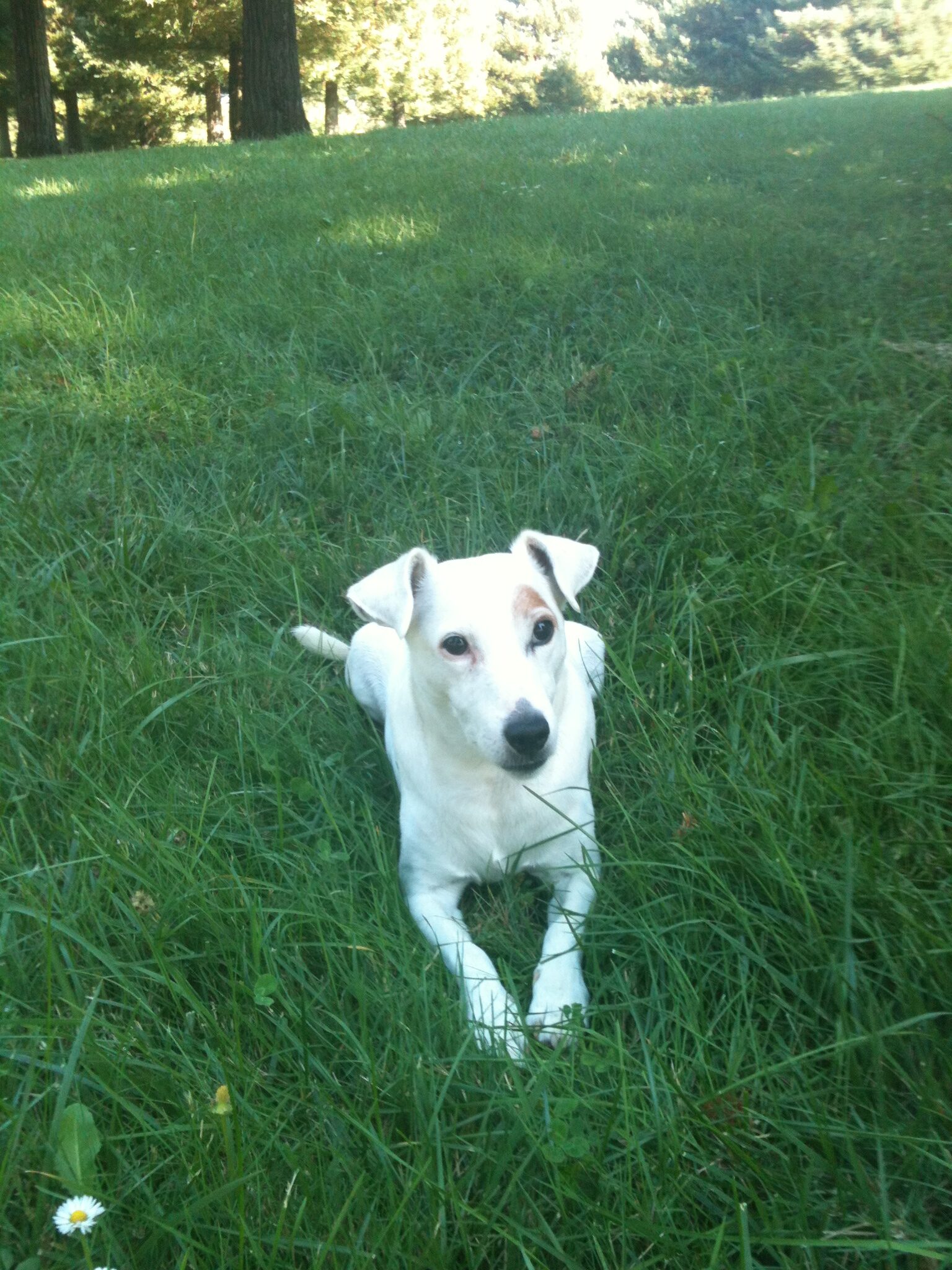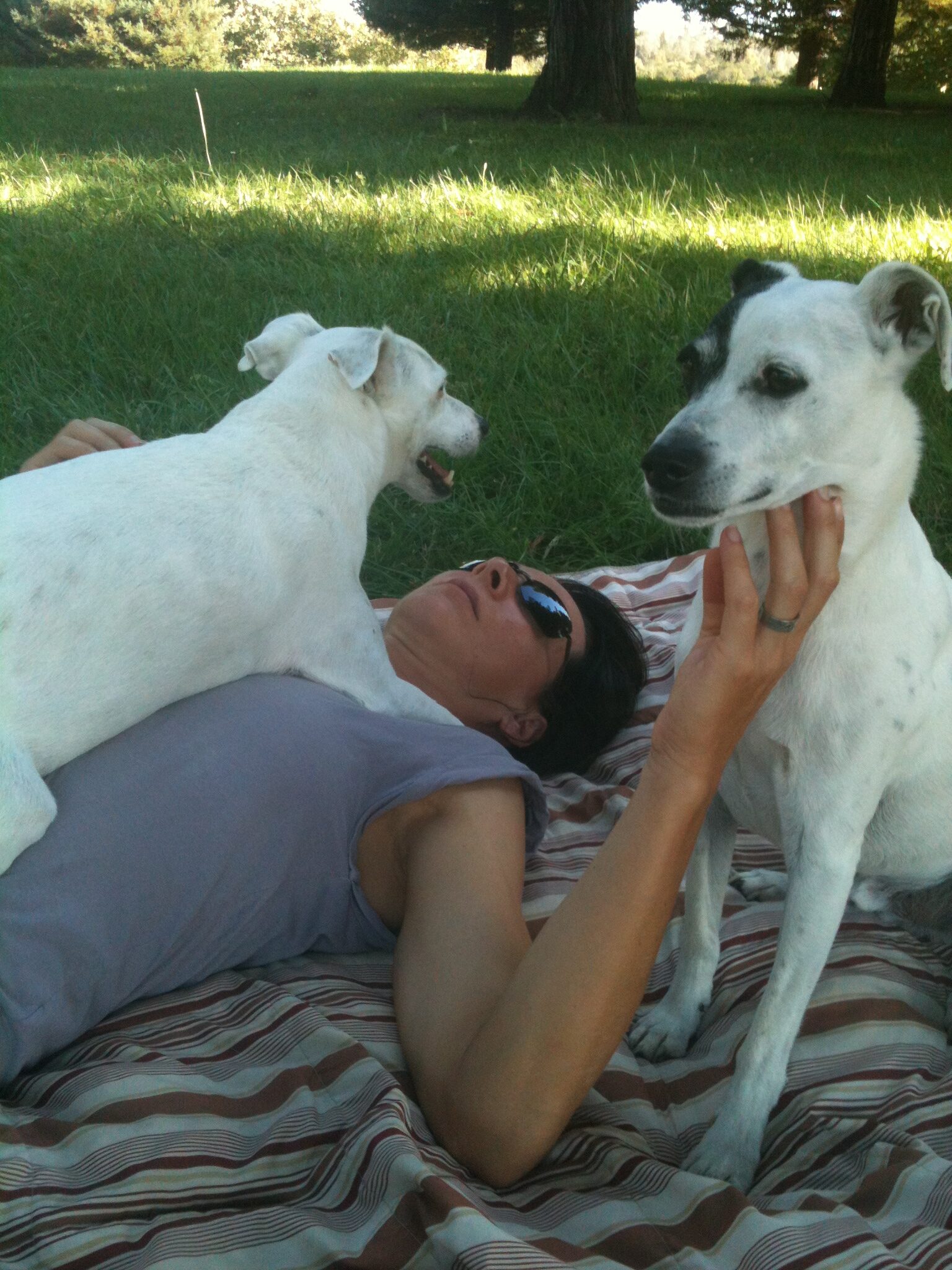I was pulled over in the sketchy parking lot of an East Oakland convenience store desperately trying to figure out why Google had me led me there. Trucks roared on the overpass above me, and the dog in the crate on passengers seat was barking deafeningly- as she hurled herself against the crate door trying to attack at me. I was close to my breaking point, but little did I know that deaf 26 pound Jack Russell/Bull Terrier originally from New Mexico, that I would name Chance, was to become my dog soulmate.
Chance was originally from New Mexico, but now she was located near San Francisco and was a “short listing” on a deaf dog website. She was listed as reactive and, wow, I was about to learn that was definitely an understatement!
I called the number on the listing and I was told that she had been surrendered that day to a high Kill Facility in the Bay area. When I contacted that facility they informed me she was on the list to be euthanized Monday morning, and she was unavailable for adoption because of her aggression towards people and dogs.
At that time we already had experience with one deaf dog in our family, and I tried to explain to the women on the phone that she was deaf and it was “fear aggression”, but she wouldn’t budge. I pressed further and told her I was experienced with deaf dogs and she had a chance to help save a dog’s life but instead she was going to let this dog die. Surprisingly it worked, and she told me the only possible solution was to convince the owner to come claim the dog.
Unfortunately, the owner was a substance abuser just out of rehab and relapsing. I tried everything, including offering money, and eventually convinced his mother to go and claim the dog -who I would pick up from her later that day. During the exchange at the mother’s house she used a long stick to slam on the floor by Chance to keep her at bay, while three Doberman’s in a dog run out back barked non-stop. She told me that Chance’s leg had been broken in a fight with them. As we stood there talking, Chance suddenly ran at me and bit me hard on the leg, but with the mother’s help I was able to get her off me and into the crate. My last challenge before leaving was to carefully remove and return one of the doberman’s large prong collars the woman had been using around her neck.
Which is how I ended up in that dismal parking lot questioning my sanity, as she was ramming and biting the cage trying to attack me.
I pulled myself together- knowing I had no clue what I was doing, but also positive that for some reason I was going to try to help this dog. Then I called my husband and told him to stay in the house with our other dogs when I got home and I released her in our yard.
However, much to my surprise, our other dogs really liked Chance and she was completely fine with them. In fact, the next dog we rescued became Chance’s bonded hearing dog and seeing the two of them together was truly amazing. But we were still a long way from that because Chance had a really big problem with people.
In the coming weeks she bit me again, bit a neighbor who reached over the gate (convinced he was great with animals) and shattered the glass on our front door attacking my husband (who defended himself with a bicycle). She was unrelenting, we were desperate, unable to see any way to make the situation safer. This eventually led to another vet visit and me placing her on a metal table to be euthanized. But when I started to set her down, she began climbing back into my arms and I broke down sobbing, unable to do it.
Chance didn’t just transform overnight. I had no idea what I was doing and felt way over my head, but along with taking care of my other two rescues, I dedicated every possible moment into Chance’s recovery. At UC Davis Veterinary Medical Facility, where a team of medical students were studying deaf dog behavior, they told me on top of being deaf she had suffered some kind of brain damage like “shaken baby syndrome”.
Chance is a very long story but one of the best stories I could imagine. Through some very creative exposure techniques, long peaceful hikes with her family of small dogs, and a lifelong commitment to giving her structure and setting her up regularly for success- Chance recovered and became a calm, happy, friendly dog- and my soulmate.



